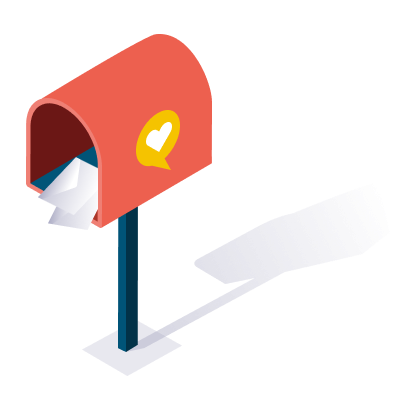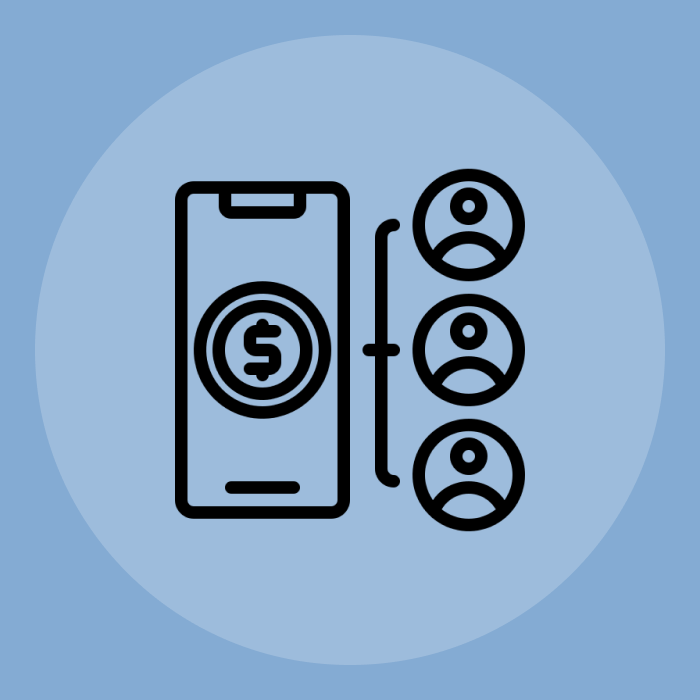Sam Makad
Sam Makad is a business consultant. He helps small & medium enterprises to grow their businesses and overall ROI. You can follow Sam on Twitter, Facebook, and Linkedin.
In this post, I'm covering everything you need to know about customer onboarding. Everything from features to benefits. Read on and find out
Many companies believe that when it comes to the customer lifecycle, nothing comes more important than the customer onboarding process. In fact, there’s more truth to it than what meets the eye, and here’s why. The customer onboarding process sets the mood of your relationship with your customers. It’s the stage where you establish their first impression, ensure their knowledge about your product, and make them feel confident about their decision to stay.
Making your customers purchase your product doesn’t ensure long-term use and patronage. In order to prevent losing them in the process, you need to take your customer onboarding to the next level by providing a positive and relevant experience. If you can get this right, you and your customers will be geared toward success. Aside from that, you can also prevent them from ending up questioning themselves as to why they even connected with you or purchased your offer in the first place.
In this article, you’ll learn everything about customer onboarding, from its core definition to some tools, as well as the challenges you must overcome in the process. Continue reading below to learn more.

The customer onboarding process covers the initial phases of the customer lifecycle. These include the signup, the purchase, and the first-time use of the product. In short, it’s how you introduce prospects to your business and the product they signed up for.
Also, in this stage, you educate your customers on how your offer can address their pain points. If your customer onboarding has unresolved flaws and drawbacks, your customers won’t think twice about leaving your company behind, which may result in significant losses. On top of that, the customer onboarding stage helps prepare your customers for everything they’ll come across someday.
It’s similar to giving a movie trailer that provides a sneak peek at all the benefits they can receive through your products and services.Furthermore, customer onboarding uses different tools to establish the first impression that leaves a positive mark in the minds of your customers. A good example of an onboarding tool is WalkMe, but there are other alternatives in the market you might want to consider.
Customer onboarding can help your business achieve success by reducing the churn rate.
Churn rate, or customer churn, refers to the rate at which customers cease the purchase of any product or service from a business. It may be inevitable, but you can stabilize it by maintaining a higher growth rate than the churn rate. In this way, your gains are higher than your losses.
Here are some ways customer onboarding can help your business:
An effective customer onboarding process should help customers understand the benefits of using the product or service they paid for. It should be thorough yet simple, and engaging yet self-explanatory. Only through this will you be able to breed loyal and trusting customers.
Suppose you’re planning an effective customer onboarding process. In that case, you want to ensure that all the essential features are included, such as:
Start your welcome emails with a simple yet encouraging congratulatory message. Congratulate your new customers for making their first purchase, and show them how excited, thrilled, and grateful you are to be a part of their journey.
Here’s an example of a welcome email:
Good day, Johann
Congratulations! Welcome to The Dark Roastery.
We’re so excited to be a part of your everyday life, and we can hardly wait to introduce you to our great selections of different coffee products across the globe.
If you want to know more about our wide range of coffee selections and receive exclusive deals and discounts, sign up now and grab our special offers for new customers like you.
If you need some assistance, give us a heads-up. We’ll be happy to guide you through the process, from our top picks to your personal coffee choices.
To Your Caffeine Dreams,
Florence at The Dark Roastery
Are welcome emails and greeting messages the same? Although many people think they’re one and the same, they’re actually not. Welcome emails are done in emails—hence, the name. Greeting messages, on the other hand, are done in-app, greeting first-time customers on their initial visit and motivating them to take action.
Of course, the process should be as simple as possible. However, it’d be best to show your customers a quick video guide when setting up their accounts.
Make sure your products have setup wizards or step-by-step tutorials. With this, your customers will be able to understand how your products work without having to ask you for the nth time.
Also, make your tutorials as simple, clear as possible, and, most importantly, optional. This is because some of your customers may have background knowledge about similar offerings.
The moment your customers enter your platform, they’ll readily notice some features with no information. Help them fill these blanks with informational and encouraging content about the features of your product.
For example, if you want to introduce your portal’s analytics to your clients, you can do it this way: ‘Use Analytics to see the performance of your marketing strategy.’
Callouts are in the form of banners that show up automatically. A callout provides essential details customers should know regarding a specific feature. Furthermore, it may serve as a guide, but not a substitute, for setups and step-by-step tutorials.
One of the essential parts of the onboarding process is educating your customers about the proper ways of using your product. To do this successfully, allow them to personally use the product and let experience be their best teacher.
Walkthroughs are similar to callouts. However, they contain helpful tips that guide and teach customers how to accomplish a specific task every time they complete one.
The resource area contains all the essential knowledge related to your products and services. It includes frequently asked questions, guides, and tutorials. Customers can visit this section from time to time whenever they have a question or problem they want to solve independently.
Be sure to visit your customers from time to time to see their progress. This will show your customers how you value and care for them. So, regularly check them once in a while, ask if they encounter some problems along the process, and see how you can help address their problems.
As mentioned earlier, the customer onboarding process makes use of different tools and technologies for a more efficient and effective workflow. So, what are these tools, anyway?
A pre-sign-up tool lets you create a personalized conversation with your potential customers. Also, it enables seamless data integration from your software stack. With this, you’ll be able to provide a great experience that’ll encourage prospects to grab your offers.
This tool helps create an effective customer onboarding process by giving users relevant, timely, and contextual tutorials and guides. Also, be sure to look for one that supports email onboarding. This is because the customer onboarding process may happen outside your platform—via email.
This tool allows you to merge multiple sales and marketing channels into one platform. These channels may include email, social media, CRM, support tools, and others, depending on your needs. This will help you provide an inclusive onboarding experience and be aware of what your users receive.
This is one of the most important tools for a successful customer onboarding process. You can use this to conduct webinars to guide new and existing users and help them address their issues in real-time. With this, you’ll be able to simplify the customer onboarding process.
This tool allows you to execute automated multi-channel messaging. With this, you’ll be able to automatically deliver emails, drip campaigns, or welcome messages depending on how customers interact. It also provides product experience data to optimize and personalize your messages.
This tool aims to provide great customer service to new and existing customers, boosting sales and providing excellent support. In most support tools, live chat and voice messaging features are included. It may also include a solid knowledge base to help users address their concerns independently.
This tool provides all the data you need regarding customer behavior. You can use this to know more about your customers and improve their satisfaction with your product. As a result, they’ll continue to purchase more of your offers, increasing customer retention and lifetime value.
Keep your eyes open to new trends that can affect the purchasing behavior of your customers. But, always stay on your guard against the challenges you might encounter.
Here are the most common challenges you’ll most likely encounter while improving customer onboarding:
First things first: no two customers are alike. Treating all your customers similarly won’t yield positive onboarding results. Why? Because customers will feel undervalued and unwelcomed. This will encourage them to look for other companies instead.
To fix this issue, focus on providing your customer's personalized welcome greetings and messages. Be sure to apply this solution to whatever mode of communication you or your customers prefer, such as SMS, emails, etc.
When improving customer onboarding, check whether the policies you’re currently following are outdated or not. Outdated policies will hinder your company’s growth because they restrict innovation and make customers feel locked inside a box.
To resolve this problem, you have to update what needs to be updated. This will help you focus on innovation, giving your company the opportunity to expand and allowing you to maximize its full potential.
Unrealistic promises bring nothing but dissatisfaction. These promises encourage customers to expect more from the business they follow. And, if that business fails to fulfill its promises, its customers won’t only be dissatisfied, but they might also lose their trust in your company.
To prevent this issue, determine the goals and needs of your customers. Never make promises unless you’re certain that you can meet or go beyond their demands. If you can no longer fulfill your promises, inform them immediately to reduce their dissatisfaction.
When improving customer onboarding, don’t forget to include sufficient product training. Lack of product training won’t allow your customers to get the most out of your products and services. And, if that happens, they’ll be dissatisfied and probably leave you in the process.
To fix this issue, make sure to provide a step-by-step product training guide to ensure that your customers understand what your offering is. Also, be sure to confirm if they can use your product confidently. And, don’t forget to check in regularly to ensure customer satisfaction.
Customer onboarding sets the tone of your relationship with your customers. Therefore, you want it to be as positive and engaging as possible.
For a successful customer onboarding process, consider using all the essential tools you might need, such as user onboarding and customer support tools. And don’t forget to address the challenges while improving the process.
You’ll also receive some of our best posts today

Sam Makad is a business consultant. He helps small & medium enterprises to grow their businesses and overall ROI. You can follow Sam on Twitter, Facebook, and Linkedin.

Mobile devices have become an integral part of our lives in this digital...
Don’t miss the new articles!